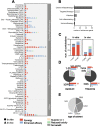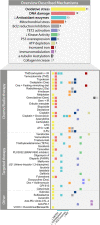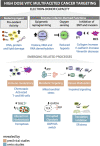High-dose intravenous vitamin C, a promising multi-targeting agent in the treatment of cancer
- PMID: 34717701
- PMCID: PMC8557029
- DOI: 10.1186/s13046-021-02134-y
High-dose intravenous vitamin C, a promising multi-targeting agent in the treatment of cancer
Abstract
Mounting evidence indicates that vitamin C has the potential to be a potent anti-cancer agent when administered intravenously and in high doses (high-dose IVC). Early phase clinical trials have confirmed safety and indicated efficacy of IVC in eradicating tumour cells of various cancer types. In recent years, the multi-targeting effects of vitamin C were unravelled, demonstrating a role as cancer-specific, pro-oxidative cytotoxic agent, anti-cancer epigenetic regulator and immune modulator, reversing epithelial-to-mesenchymal transition, inhibiting hypoxia and oncogenic kinase signalling and boosting immune response. Moreover, high-dose IVC is powerful as an adjuvant treatment for cancer, acting synergistically with many standard (chemo-) therapies, as well as a method for mitigating the toxic side-effects of chemotherapy. Despite the rationale and ample evidence, strong clinical data and phase III studies are lacking. Therefore, there is a need for more extensive awareness of the use of this highly promising, non-toxic cancer treatment in the clinical setting. In this review, we provide an elaborate overview of pre-clinical and clinical studies using high-dose IVC as anti-cancer agent, as well as a detailed evaluation of the main known molecular mechanisms involved. A special focus is put on global molecular profiling studies in this respect. In addition, an outlook on future implications of high-dose vitamin C in cancer treatment is presented and recommendations for further research are discussed.
Keywords: Ascorbic acid; Cancer; Clinical trials; IVC; Metabolomics; Proteomics; Transcriptomics; Vitamin C.
© 2021. The Author(s).
Conflict of interest statement
The authors declare that they have no competing interests.
Figures






References
Publication types
MeSH terms
Substances
Grants and funding
LinkOut - more resources
Full Text Sources
Medical

